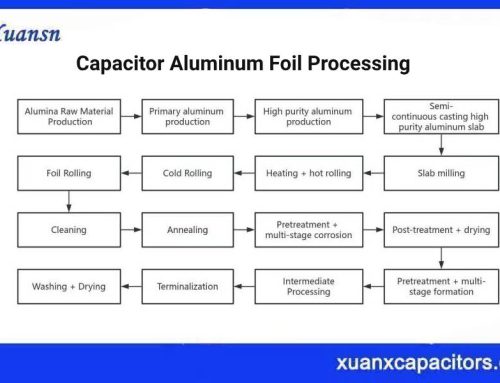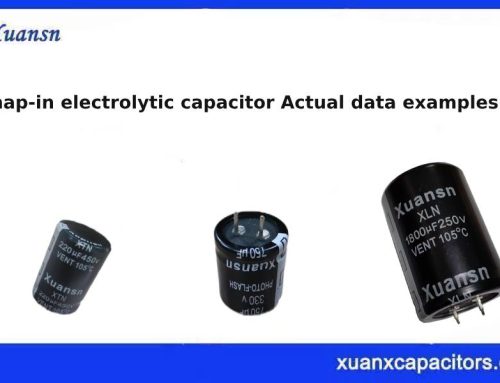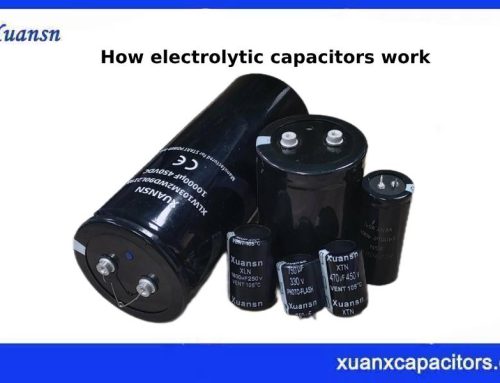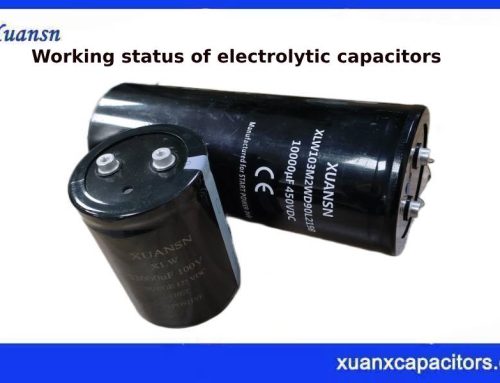1.1 Historical development of Ultracapacitor
Ultracapacitor first appeared in the middle of the 18th century. Pieter Van Musschenbrock of Leiden University in the Netherlands and Ewald Geory Von Kleist of Germany developed the Leiden bottle, which is recognized as the prototype of all capacitors. In 1879, Hermann Ludwig Ferdinand Von Helmholtz discovered the interface double electric layer phenomenon. In 1957, Becker obtained the patent of electric double layer capacitor, which made a new breakthrough in the production of capacitors. In the late 1960s, the appearance of a super capacitor made the research and application of capacitors develop rapidly. The research on supercapacitors mainly focuses on the development of novel electrode materials, the selection of appropriate electrolyte, and the optimization of capacitor assembly technology.
At present, electrode materials can be divided into three categories: carbon materials, transition metal oxides and conductive polymer materials. In fact, the performance of the latter two materials as electrodes is better than that of carbon materials, but the high price of precious metal materials and the instability of conductive polymer doping make the research of the latter two types of supercapacitors mostly limited to the laboratory stage, and it is unlikely to be commercialized in the short term. In addition, asymmetric supercapacitor (also known as hybrid supercapacitors or hybrid supercapacitors) are assembled with different positive and negative electrode materials, which significantly improve the energy storage capacity.
🌷In 1969, SOHIO Company first realized the commercialization of carbon electrochemical capacitors; In 1979, NEC Company of Japan began to produce supercapacitors; NEC/Tokin and Panasonic Mitsubishi took the lead in realizing the commercial production of supercapacitors in 1980 and 1987. In the 1990s, Econd and Elit introduced electrochemical capacitors suitable for high-power starting power occasions. Today, Panasonic, NEC, EPCOS, Maxwell, PowerStor, Evans, Saft, Cap XX, Ness and other companies are very active in the research of supercapacitors. At present, products from the United States, Japan and Russia almost occupy the entire supercapacitors market
1.2 Definition and characteristics of supercapacitors
1.2.1 Definition of ultracapacitor
🌹Supercapacitor, also known as electrochemical capacitor (EC), gold capacitor and Faraday capacitor, is a new energy storage device between battery and flat capacitor. Unlike batteries, supercapacitors do not undergo chemical reactions during charging/discharging. The storage or release of electric energy is a physical process established by an electrostatic field. The electrodes and electrolyte almost do not age, so they have a long service life,It can realize fast charging and large current discharge. In addition, its charge storage capacity is nearly 3-4 orders of magnitude higher than that of ordinary capacitors, so it is called “super” capacitor
1.2.2 Characteristics of ultracapacitor
As a new green energy storage device between traditional capacitors and rechargeable batteries, supercapacitors have the following performance advantages:
🌺(1)Ultra high electrical capacity (0.1~6000F). The capacitance of traditional capacitors is small, while the capacitance of super capacitors is up to 6000F, thousands of times that of tantalum, aluminum and other electrolytic capacitors, which can meet the operation requirements of complex equipment.
(2)High power density. The output power density of the supercapacitors can reach 10kW · kg-1, hundreds of times that of the chemical battery. It can emit hundreds to thousands of amperes of current in a very short time, and can be used for high power output equipment.
🌸(3)Fast charging speed. As the charging/discharging of supercapacitors is a physical process or a fast reversible chemical process on the electrode surface, it can be charged with large current and completed in tens of seconds to several minutes to achieve a real sense of fast charging.
(4)Ultra long cycle life. The super capacitor is based on the highly reversible adsorption/desorption mechanism of ions. It is not easy to have the phenomena that affect the service life such as the crystal transformation and shedding of active substances. The theoretical cycle life of carbon based capacitors is infinite, which can actually reach more than 100000 times, 100 times higher than that of chemical batteries.
🌼(5)Wide temperature range. The reversible adsorption/desorption process of electrode material surface of supercapacitors is little affected by temperature, so it can be used in a wide temperature range (- 40~+70 ℃).
(6)High charging/discharging efficiency. Due to its high reversibility, the charge/discharge efficiency of supercapacitors can reach 98%, which is obviously superior to that of chemical battery.
🌻(7)Light weight, maintenance free, less pollution, safety and environmental protection.
1.3 Composition of super capacitor
1.3.1 Electrode materials
🌞Electrode is the core component of supercapacitors, which mainly generates double electric layers and accumulates charges. Therefore, electrode materials should have large specific surface area, no reaction with electrolyte, good conductivity and other performance characteristics. Carbon materials, metal oxides and conductive polymers are common
1.3.1.1 Carbon electrode materials
🌝Carbon material is the most commonly used electrode material for supercapacitors, and it is also the electrode material that has been commercialized successfully at present. Carbon materials have high specific surface area and good electronic conductivity. In addition, they are rich in content, low in cost, easy to process, non-toxic, and have high chemical stability. At present, the commonly used carbon materials mainly include activated carbon, carbon aerogel, carbon nanotubes and graphene. Although carbon materials have a high specific surface area, the performance of carbon based supercapacitors is not very ideal, and the mass specific capacitance is only 40-200F. The important factors affecting the performance of carbon based supercapacitors are their specific surface area, pore size distribution, pore shape and structure, surface functional groups and conductivity, of which the specific surface area and pore size distribution are the most important two factors. At present, the methods to improve the specific capacitance of carbon materials mainly include activation modification, introducing functional groups or heteroatoms such as oxygen, nitrogen and sulfur on the surface of materials
1.3.1.2 Metal oxide electrode materials
🌛In general, transition metal oxides have higher energy density than traditional carbon materials and more stable electrochemical properties than conductive polymers. It can not only produce double electric layers like carbon materials to store charges, but also generate pseudo capacitance by Faraday reaction with electrolyte ions. At present, the metal oxide materials used in capacitors are oxides of Ru, Co, Ni, Mn, Zn, Fe and other elements. Ruthenium oxide, which has excellent redox reversibility, high conductivity, wide electrochemical window, has high energy density, power density and cycle stability. However, the high cost and environmental harmfulness of ruthenium limit its application in commercial supercapacitors.
In recent years, cheap and environment-friendly metal oxide electrode materials have attracted more and more attention from researchers, such as MnO2, NiO, Co3O4 and Fe3O4. Among them, MnO2 has received the most attention due to its relatively low cost, low toxicity, environmental friendliness and high theoretical capacity (1100~1300F). In recent years, with the gradual development of graphene, carbon nanotubes and other materials, the introduction of graphene, carbon nanotubes into transition metal oxides to prepare composite materials has become a research hotspot. Compared with single electrode materials, composite materials have better electrochemical performance.
1.3.1.3 Conductive polymer electrode materials
🌜Conductive polymer is a kind of polymer material with intrinsic conductivity, which has the characteristics of low cost, high conductivity, wide electrochemical window and high theoretical capacity. It is especially suitable for the current battery process to prepare supercapacitors. At present, polyaniline (PANi), polypyrrole (PPy), polythiophene (PTh) and their derivatives are the most widely studied conducting polymers. The conductive polymer stores energy through redox reaction. When the oxidation reaction occurs, the electrolyte ions are transferred to the polymer skeleton; When a reduction reaction occurs, ions are released from the polymer skeleton into the electrolyte.
These oxidation-reduction reactions occur in the entire material of conductive polymer, not only on the surface of the material, but also do not involve the change of material structure during the whole charging/discharging process, so the reaction is highly reversible. However, in the process of ion embedding and deinterlacing, the volume of conductive polymer will expand and contract, leading to the decline of electrochemical performance and cycle stability, which limits the conductive polymer as the electrode material of supercapacitors. At present, the main methods to solve its poor cycle stability are:
🌕(1)Improve its structure and morphology, such as preparing nanowires, nanorods and nanotubes, to reduce the volume expansion during the cycle.
(2)Because the p-type doped state of conductive polymer is more stable than the n-type doped state, using carbon materials as negative electrode instead of n-type doped polymer can effectively improve the cycle stability of capacitor.
🌖(3)The preparation of composite electrode can improve its chain structure, conductivity, mechanical stability, machinability and stress dispersion, so as to improve its electrochemical stability.
1.3.2 Electrolyte
🪐Electrolyte is an important part of supercapacitor, which is generally composed of solvent, electrolyte and additives. Together with electrode materials, it determines the performance of the capacitor. At present, the electrolyte of supercapacitor is mainly divided into water system, organic system, ionic liquid and solid electrolyte.
1.3.2.1 Water electrolyte
💫Aqueous electrolyte is the earliest electrolyte used in supercapacitors. Aqueous electrolyte is widely used in supercapacitors. It has the characteristics of high conductivity, small electrolyte particle diameter, easy to fully impregnate with micropores, easy to make full use of material surface area, and low price. The commonly used aqueous electrolyte mainly includes acid electrolyteAlkaline electrolyte and neutral electrolyte. H2SO4 aqueous solution is the most commonly used acid electrolyte, which has the advantages of high conductivity, high ion concentration and low resistance. KOH aqueous solution is the most commonly used alkaline electrolyte, which also has the advantages of high conductivity and low internal resistance.
Although the conductivity of neutral electrolyte is lower than the two, it is less corrosive and safe. The main disadvantages of aqueous electrolytes are narrow electrochemical window, low oxidation decomposition voltage, low energy density and poor low-temperature performance. The C/PbO2 mixed system studied earlier is a typical acidic system. Its positive electrode uses the positive electrode of the thin lead-acid battery, the redox reaction of PbSO4/PbO2 electric pair, the negative electrode uses coated activated carbon or activated carbon fiber cloth, and the sulfuric acid aqueous solution is used as the electrolyte solution.
⭐️In addition, the alkaline electrochemical hybrid capacitor with NiO or NiOOH/Ni (OH) 2 as the positive electrode and activated carbon as the negative electrode has been studied extensively, and KOH aqueous solution as the electrolyte. The charging voltage of the system is about 1.5V. Y. G. Wang also reported that lithium ion intercalated compound was used as positive electrode, activated carbon as negative electrode, and Li2SO4 waterNeutral mixed capacitor system with electrolyte solution. Although the water mixed capacitor is widely used, the decomposition voltage of water electrolyte is low (the theoretical decomposition voltage of water is 1.23V). The temperature range from the freezing point of water to the boiling point makes the low temperature performance of the capacitor poor, and the strong acid or alkali has strong corrosivity, which is unfavorable for operation and packaging.
1.3.2.2 Organic electrolyte
🌟Compared with aqueous electrolytes, organic electrolytes have the advantages of wide and stable electrochemical window, high decomposition voltage, weak corrosivity, and wide operating temperature range. Cations of commonly used organic electrolytes mainly include quaternary ammonium salts, such as tetramethyl ammonium, tetraethyl ammonium, trimethylethyl ammonium, etc. In addition, lithium salts and quaternary salts have also been reported. The commonly used anions mainly include tetrafluoroborate anions, perchloric acid anions and hexafluorophosphate anions. Compared with aqueous electrolytes, the disadvantages of organic electrolytes are low conductivity, large internal resistance, and poor performance during large rate charge/discharge. At the same time, due to the limited amount of soluble electrolyte salts in organic solvents, the concentration of conductive ions in organic electrolytes is low, and “ion deficiency effect” is likely to occur in the late stage of high voltage charging process
At present, the research on organic electrolyte mainly focuses on developing new electrolyte salts and optimizing the organic solvent system to improve the conductivity of organic electrolyte, reduce the viscosity of electrolyte, etc., so that the electrolyte has excellent electrochemical performance in high voltage and low temperature fields
✨Dipyrrolidine tetrafluoroborate has attracted extensive attention due to its excellent electrochemical performance. The solubility of electrolyte salts in many organic solvents is higher than that of traditional quaternary ammonium salt electrolyte salts (tetraethyl ammonium tetrafluoroborate, triethyl methyl ammonium tetrafluoroborate). In the same concentration of electrolyte.
SBPBF4/PC electrolyte has high conductivity and wide electrochemical window. K. Chiba et al. have shown that SBPBF4/PC has high conductivity, good magnification performance and excellent low-temperature performance. Naoi et al.] found that the electrolyte prepared by dissolving SBPBF4 in the mixed solvent of propylene carbonate and dimethyl carbonate can withstand voltage up to 3V. When alkylated cyclic carbonate and linear organic solvent are used in the electrolyte, the withstand voltage of SBPBF4 electrolyte can reach 3.2V.
⚡️The low temperature performance and cycling performance of supercapacitors can be effectively improved by adding methoxypropionitrile solvent with low viscosity and medium dielectric constant to vinyl carbonate and ethyl acetate solvent, and replacing TEABF4 with SBPBF4. When the working voltage is 2.3V, using the mixed solvent of vinyl carbonate and ethyl acetate can significantly improve the cycle performance of the electric double-layer capacitor. Because the electrolyte of double layer capacitorThe solvent used has a freezing point. When the freezing point is lower than that of the solvent, the performance of the capacitor will decline rapidly. The lowest working temperature of the electrolyte of the double layer capacitor in the commonly used acetonitrile solvent system and propylene carbonate solvent system is – 45 ℃ and 25 ℃ respectively, which greatly limits the application of these electrolytes at lower temperatures.
In order to broaden the low temperature application range of electric double layer capacitors, it is necessary to develop new low temperature electrolyte systems. Tetraethylammonium tetrafluoroborate and triethylmethylammonium tetrafluoroborate are the most commonly used organic electrolytes for electric double layer capacitors. Many researchers are studying the modification or optimization of this electrolyte system. J added tetraethyl ammonium tetrafluoroborate/vinyl carbonate into the organic solvents of methyl acetate, ethyl acetate and methyl formate, and the conductivity of the mixed solvent electrolyte at low temperature was significantly higher than that of the PC single solvent electrolyte.
💥Brandon et al. added EA, MA, MF or 1 of appropriate proportion into TEABF4/AN electrolyte,Solvents with low melting point, low viscosity and medium dielectric constant, such as dioxolane, can obtain the electrolyte of mixed solvent system, thus expanding the application range of supercapacitors at low temperatures. The results showed that SBPBF4 electrolyte salt was used to replace TEABF4 electrolyte salt to dissolve in various organic solvents, and the prepared electrolyte still showed excellent electrochemical performance under extreme low temperature conditions.
Chiba et al found that the electrolyte obtained by dissolving SBPBF4 into DMC+PC binary solvent system can still reach the discharge specific capacitance of 15.7 F at – 40 ℃ (based on the two electrode system). When DMC volume content is 30%, the discharge specific capacitance of binary solvent electrolyte is at least 10% higher than that of PC single solvent electrolyte. Korenblit et al. found that the energy density of SBPBF4/AN+MF electrolyte and zeolite template carbon can still reach 86% of the room temperature energy density at – 70 ℃. Perricone et al. showed that the methoxypropiononitrile was added to 1mol SBPBF4/ECThe mixed solvent obtained from the electrolyte has a conductivity of 5.2 mS at – 25 ℃.
1.3.2.3 Electrolyte of ionic liquid system
🔥Room temperature ionic liquids (or room temperature molten salts, room temperature molten salts, organic ionic liquids) are referred to as ionic liquids. It is a substance composed of anions and cations, which is liquid at or near room temperature. Because anions and cations can be designed according to the needs of researchers to prepare ionic liquids with certain special properties, ionic liquids are also called “designable solvents” by some researchers. Ionic liquid is a kind of liquid substance with the smallest active particle as ion. Its anion and cation have large difference in size and asymmetric structure, resulting in small steric hindrance and free movement. Ionic liquids with good comprehensive performance used in ultracapacitor electrolyte mainly include imidazole salt, alkyl quaternary ammonium salt, pyrrolidine salt, alkyl piperidine salt, alkyl pyridinium salt, etc. In general, the conductivity of ethyl imidazolium salt is high, about 10mS, and the conductivity of other electrolytes is slightly low, 0.1~5m. Because of its high viscosity and low conductivity, pure ionic liquids are not suitable for direct use as electrolytes. However, when appropriate solvents are added, the viscosity of the electrolyte decreases significantly and the conductivity increases rapidly, which is more in line with the application requirements of supercapacitor electrolyte.
1.3.2.4 Solid electrolyte
🌈Solid electrolyte integrates electrolyte and diaphragm into the same material, and there is no electrolyte leakage when the capacitor is damaged. It has good safety and reliability in the application process. Solid polymer electrolytes have the advantages of light weight, good viscoelasticity and good stability, which can promote the development of miniaturization and ultra-thin capacitors. However, due to the poor mechanical properties of solid electrolyte membrane, the precipitation of liquid electrolyte, low electrolyte solubility and low conductivity, it still cannot meet the practical application standards. Most of the current research has not gone out of the laboratory, and there is still a certain distance from large-scale commercial production and application.
1.4 Classification of Ultracapacitor
☀️According to different standards, ultracapacitor can be divided into different categories, as shown below.
According to different energy storage mechanisms, it can be divided into three types: electric double layer ultracapacitor, electrical pseudo capacitor and hybrid supercapacitor. Among them, the hybrid ultracapacitor is a hybrid capacitor produced by assembling and combining the electrode materials of the electric double layer and the Faraday pseudocapacitor. The energy storage mechanism is relatively complex. It is generally believed that there are both electric double layer and Faraday pseudocapacitor mechanisms. The assembly process needs to consider the respective capacitance values of the positive and negative electrode materials and the mass ratio between them.
🍏According to different electrode materials, it can be divided into carbon based electrode capacitor, metal oxide electrode capacitor, conductive polymer capacitor and composite electrode capacitor
According to the different electrolytes, it can be divided into liquid electrolyte ultracapacitor and solid electrolyte supercapacitor. According to different solvents, liquid electrolyte capacitors can be divided into aqueous supercapacitors and organic supercapacitors.
🍎According to the difference between the positive and negative electrode composition and the reaction on the electrode, it can be divided into symmetric supercapacitor and asymmetric supercapacitor. Symmetrical capacitor refers to two electrodes with the same composition, the same electrode reaction and opposite reaction direction, such as carbon electrode electric double layer capacitor, precious metal oxide capacitor, etc. In addition, there are a few asymmetric supercapacitors that use different positive and negative electrode materials, also known as hybrid supercapacitors or hybrid supercapacitors. They use different electrode materials at the two poles, such as carbon materials that form double layer capacitors at one pole, and metal oxide electrodes that use Faraday quasi capacitors to store energy at the other pole. On the basis of keeping the voltage unchanged or slightly increasing, using the effective ratio of the super specific energy of the metal oxide supercapacitor to the electric double-layer supercapacitor, the specific energy is times higher than that of the electric double-layer supercapacitor. When working, this kind of capacitor not only has the contribution of electric double layer capacitor, but also includes the role of quasi capacitor, so its specific energy is greatly improved compared with the simple electric double layer capacitor, and it can also have higher specific power and cycle life.
1.5 Application
🍐Supercapacitor, with its many advantages, has been widely concerned by people once it came out, and has been successfully applied in many fields. It serves as a backup power supply for electronic products such as memory, computers, timers, etc. It is used as an auxiliary power supply for electric vehicles and hybrid electric vehicles, solar and wind power generation devices, and can also be used in military, aerospace and other fields.
1.5.1 Electronics industry
🍊The super capacitor can be charged in a short time, and can provide relatively large energy, which can be used as a backup power supply for memory, microcomputer, system motherboard, clocks, etc. When the main power supply is interrupted or the system voltage is reduced due to poor contact, the super capacitor can play a backup role to avoid the impact on the instrument caused by sudden power failure. Super capacitors can replace batteries as power supply for small electrical appliances such as electric toys, clocks, cameras, recorders, portable cameras, etc. Super capacitors are also ideal for digital wireless applications [10]. The ultracapacitor can also be used on data recording equipment working in a rather harsh environment, such as counting equipment or package detector. At present, the new cylindrical pulse ultracapacitor with small volume and low height is in the practical stage.
1.5.2 Electric vehicle and hybrid vehicle
🍋The requirements of electric vehicles for power supply have attracted worldwide attention to ultracapacitor, a new type of energy storage device. Secondary batteries, including fuel cells, have some limitations in terms of high power output, rapid charging, wide temperature range use, etc. Super capacitors can better meet the power requirements of electric vehicles, especially hybrid electric vehicles when starting, accelerating, and climbing. If it is used together with the power battery, it can act as a large current or energy buffer zone to reduce the damage of large current charging/discharging to the battery and extend the service life of the battery. At the same time, the instantaneous energy can be recovered into the ultracapacitor through the regenerative braking system to improve the energy utilization rate. The ultracapacitor developed by Maxwell Company of the United States has been well applied in various types of electric vehicles. Honda has used self-developed supercapacitors to replace secondary batteries in its third and fourth generation fuel cell electric vehicles FCX-V3 and FCX-V4, reducing the weight and volume of the car, increasing system efficiency, and recovering energy when braking.
In August 2006, the super capacitor tram jointly developed by Shanghai Aowei Technology Development Co., Ltd. and Shanghai Bus Tram successfully realized commercial operation in the downtown area of Shanghai, providing a new idea for the development of urban public transport. Shanghai No. 11 super capacitor buses and trams have been in operation for more than 3 years. The total mileage of 17 buses exceeds 1.5 million kilometers, carrying 6.8 million passengers, and the average energy consumption is only 0.98 kW (the operating energy consumption cost is 0.7 yuan/km). It is precisely because of these advantages that the number of super capacitor buses will increase to 36 during the 2010 Shanghai World Expo.
1.5.3 Auxiliary power supply of solar and wind power generation devices
🍉The super capacitor can be used as the auxiliary power supply of solar or wind power generation devices. It can store the instantaneous large current generated by the power generation device due to the instability of the wind source and light source intensity at a fast speed and release it according to the design requirements, thus greatly increasing the stability of the power grid. In addition, the characteristics of ultracapacitor, such as long life, maintenance free and environmental protection, are also convenient for long-term maintenance free work in the field and become a real green energy. For example, in the daytime, the solar energy provides power and charges the supercapacitor, and in the evening, the ultracapacitor provides power. As the use and maintenance requirements of super capacitors are extremely low, and the service life can reach 10 years, this new type of beacon light can greatly reduce the intensity of daily maintenance work and ensure long-term reliable work.
1.5.4 Military, aerospace
🍇In addition to the conventional high specific energy battery, the new generation spacecraft must be combined with a super capacitor to form a “compact ultra-high power pulse power supply” during the launch phase. By adjusting the pulse release rate, pulse density and peak release power, the pulsed electric takeoff accelerator, arc jet thruster and other devices can reach any average power level under the pulse state. Evans Company has developed a large super capacitor with a working voltage of 120V, stored energy of more than 35kJ and power of more than 20kW
As a new type of energy storage element, ultracapacitor has great potential in electric vehicles, electromagnetic weapons and uninterruptible power supply due to its super capacity and high energy storage density. In the practical process, especially in the wider application of pulse power technology, the problems of low working voltage and large internal resistance need to be solved. The two main applications of ultracapacitor are high power pulse application and instantaneous power holding application. High power pulse applications are characterized by large currents flowing instantaneously to the load. Instantaneous power retention applications are characterized by the requirement to continuously provide power to the load. A typical application of instantaneous power retention, which generally lasts for a few seconds or minutes, is to reset the disk drive head when power is lost. Different applications require different parameters of ultracapacitor. High power pulse applications utilize the small internal resistance (R) of ultracapacitor, while instantaneous power retention applications utilize the large electrostatic capacity (C) of ultracapacitor
🍓In the future, the research focus of ultracapacitor will still be on the development and design of new materials to obtain ideal electrode materials and systems, improve the performance of capacitors, and prepare new power supplies with good performance, low price and convenient use to meet the market demand.




